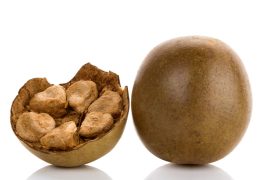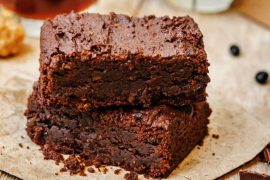Winter brings with it an increased likelihood of digestive issues like constipation and bloating, coupled with a tendency to crave high-fat and sugary treats. These indulgences can pose risks for individuals with conditions such as heart disease, diabetes, blood pressure, and fatty liver problems. Recognizing the significance of fiber-packed recipes in this season becomes crucial, as it plays a multifaceted role in promoting overall health.
Dietary fiber is indispensable for facilitating optimal bowel movements, regulating blood sugar levels, and reducing the risk of chronic diseases such as diabetes and cardiovascular illnesses. Moreover, fiber aids in creating a sense of fullness, preventing overindulgence, and contributing to weight management. With an increased appetite during winter, the inclusion of fiber-packed foods in the diet becomes even more important to curb unhealthy cravings.
The primary sources of dietary fiber are plant-based foods, including seasonal fruits and vegetables, legumes, nuts, and seeds. These foods are not only rich in fiber but also boast antioxidants and anti-inflammatory properties. To maintain overall well-being and gut health, adults are recommended to consume around 25 grams of fiber daily. The benefits of fiber extend beyond digestive health, positively influencing various bodily functions, including brain health.
Examples of fiber-packed foods include fruits like oranges, vegetables, oats, millets, barley, flaxseed, psyllium, lentils, peas, and spinach. Incorporating these items into the winter diet not only provides warmth but also ensures the consumption of healthful foods that promote general well-being. In conclusion, recognizing the importance of dietary fiber in winter is key to addressing digestive distress, managing cravings, and supporting overall health.
Delicious Fiber-Packed Recipes to Boost Your Health:
Incorporating fiber into your winter diet is essential for maintaining digestive health and overall well-being. Here are seven delicious ways to boost your fiber intake during the winter:
1. Vegetable Soups:
Create hearty and fiber-packed soups by incorporating a variety of winter vegetables such as carrots, sweet potatoes, broccoli, and kale. but also enhance the flavor of your soup.
2. Oatmeal with Winter Fruits:
Start your day with a warm bowl of oatmeal topped with seasonal fruits like apples, pears, or berries. Oats are an excellent source of soluble fiber, and adding fruits provides additional fiber, vitamins, and antioxidants.
3. Whole Grain Winter Salads:
Prepare salads using winter grains like quinoa, farro, or barley as a base. Toss in roasted winter vegetables, nuts, and seeds for added fiber and texture. Consider using a vinaigrette dressing made with olive oil for a healthy touch.
4. Roasted Fiber-Rich Vegetables:
Roast a mix of fiber-packed winter vegetables like Brussels sprouts, cauliflower, and butternut squash. Season them with herbs and spices for added flavor. Roasting enhances the natural sweetness of the vegetables, making them a tasty and nutritious side dish.
5. Bean and Lentil Stews:
Create hearty stews by combining beans, lentils, and a variety of vegetables. These legumes are rich in fiber and provide a good source of protein. Add warming spices like cumin and paprika for a flavorful winter dish.
6. Whole Grain Winter Casseroles:
Use whole grains like brown rice or quinoa as a base for winter casseroles. Add in a mix of vegetables, lean proteins, and legumes for a well-rounded and fiber-packed meal. Consider using whole grain pasta or noodles in casseroles for an extra boost of fiber.
7. Baked Winter Squashes:
Winter squashes like acorn squash, butternut squash, and spaghetti squash are not only delicious but also high in fiber. Roast or bake them with a drizzle of olive oil and your favorite herbs for a nutritious side dish or main course.
Remember to stay hydrated and balance your fiber intake with an adequate amount of water to promote healthy digestion. Additionally, try to incorporate a variety of fiber-packed sources to ensure you benefit from different types of fiber and their respective health advantages.
Disclaimer:
The information contained in this article is for educational and informational purposes only and is not intended as a health advice. We would ask you to consult a qualified professional or medical expert to gain additional knowledge before you choose to consume any product or perform any exercise.








